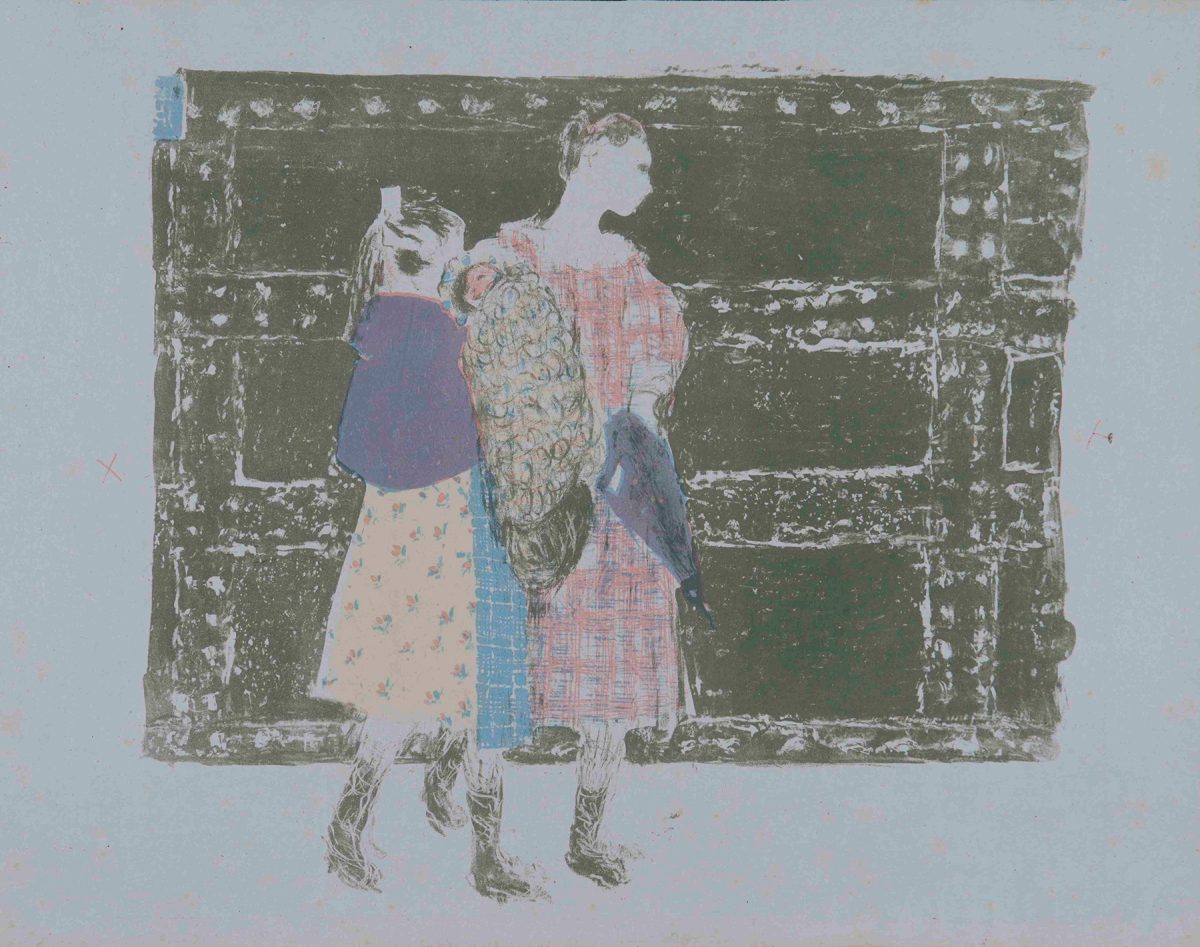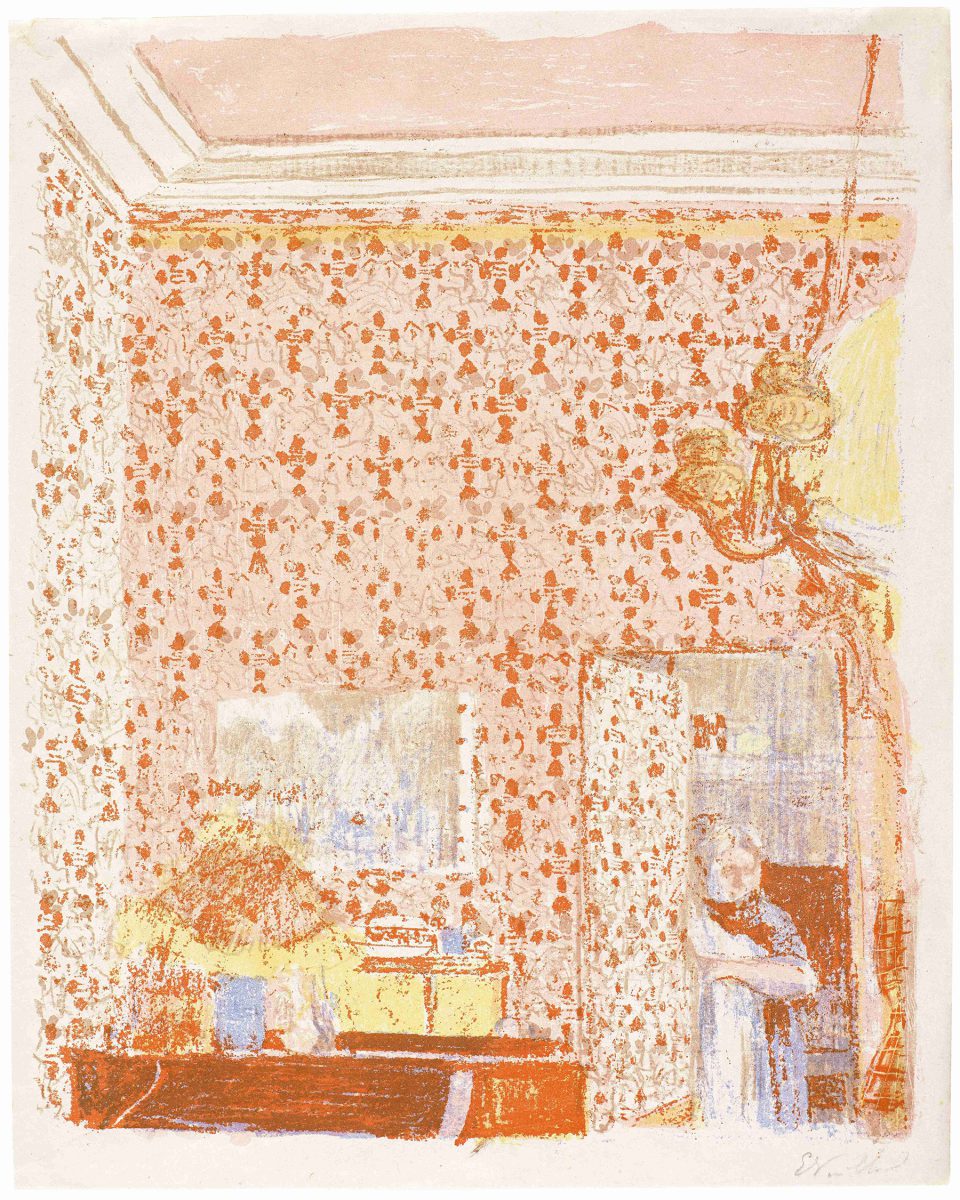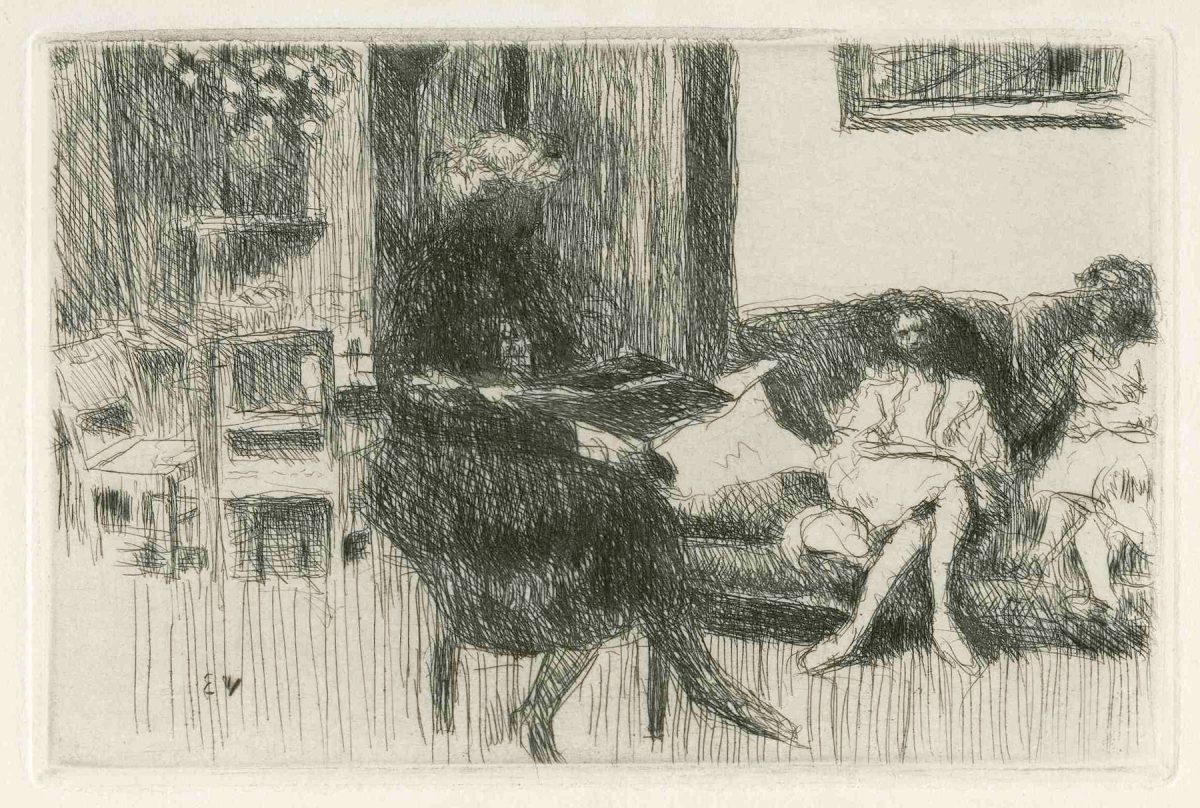Édouard Vuillard stands out as one of the most prominent painter-printmakers of the late nineteenth century, largely due to his remarkable successes in the field of colour lithography.
Born in 1868 in Saône-et-Loire, Vuillard grew up in Paris. While attending the Lycée Condorcet, he formed friendships with future painters Ker-Xavier Roussel and Maurice Denis. He soon emerged as a key member of the Nabis, a group of young artists at the Académie Julian who were captivated by colour, influenced by Gauguin, and determined to invent a radically new aesthetic. Unlike some of his contemporaries who adhered to religious themes, Vuillard gravitated toward everyday subjects, particularly intimate interiors and portraits.
By the early 1890s, Vuillard had mastered the techniques of color lithography, becoming a leading figure in the revival of this art form. His first major success as a lithographer, Le Jardin des Tuileries (1896), was published in the inaugural Album de Peintres-graveurs, published by the renowned art dealer Ambroise Vollard, a known collector of Cézanne and Gauguin. Vuillard continued this collaboration with Vollard by contributing to the second album of this series on the day’s best painter-printmakers, and he even designed the cover for a third iteration that, sadly, was never published. Vuillard soon published his Landscapes and Interiors (1899) with Vollard, a series now seen as one of the genre’s masterpieces, featuring twelve colour lithographs that constitute the pinnacle of Vuillard's graphic work. Vuillard also created numerous plates for the Théâtre de l'Œuvre and for La Revue blanche, linking him to the theatrical and literary avant-garde.
While Vuillard gradually moved away from printmaking around 1900, his painting career began to flourish. Throughout his life, he maintained a modest and orderly existence, remaining single and sharing various Parisian apartments with his mother until her death in 1928. The later years of his life were marked by recognition, including two state commissions in the late 1930s and a retrospective at the Musée des Arts Décoratifs in Paris in 1938. Vuillard died in 1940, in the midst of the German invasion. His last great print, La Place Vintimille (1937), intriguingly employed etching, a technique he had rarely practised before. Too often thought only as a 'wise' artist, Vuillard nonetheless demonstrated remarkable creativity and artistic freedom throughout his life, and particularly in his lithographs of the 1890s.
*
The Fondation William Cuendet & Atelier de Saint-Prex houses six prints by Édouard Vuillard. With the exception of one recent acquisition, Sur le Pont de l'Europe, 1899, these prints all come from the private collection of Gérard de Palézieux.


